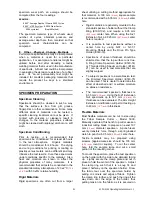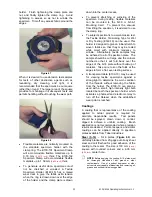
Grit Feeder Attachment 155 / 255
The Model 155 or 255
Grit Feeder
is used in conjunction with the Taber
Abraser to evaluate three-body abrasion caused by the destructive action
of fine, hard particles. Positioned over the Taber Abraser, the Grit Feeder
is a freestanding instrument that deposits abrasive grit particles uniformly
and continuously onto the specimen surface. As the specimen holder
rotates, the loose grit passes under a pair of leather-clad wheels. The
resulting rolling action of the particles serves as the abradant and
contributes to the physical breakdown of the material. The vacuum hose
from the Taber Abraser is inserted into the base of the Grit Feeder allowing
a pickup tube to be positioned such that grit particles and debris are
removed. The operation of the grit feeder is controlled through the Taber
Abraser, ensuring that the turntable, grit distribution and vacuum suction
are actuated at the same time.
Two versions of the Grit Feeder are available, Model 155 and 255. Model
155 offers a hopper capacity of 1,300 grams and utilizes and alignment guide screw to set the position of
the instrument. Grit distribution and vacuum removal nozzle heights are adjusted using a thumbscrew.
Model 255 offers an increased hopper capacity of 4,500 grams. A telescoping feature allows precise
height adjustments and permits testing of specimens up to 50 mm
(2 inch)
. An alignment block is
incorporated into the base to assist with proper set-up. In addition, the Model 255 may be mounted to
either the right or left hand side of the Abraser, enabling two instruments to be used with Taber’s Dual
Rotary Abraser.
Multi-Media Abraser 5500
The Model 5500
Multi-Media Attachment
is an accessory attachment for the
Rotary Platform Abraser used to evaluate particle abrasivity. Applications
include fluids, powders and semi-solids such as paints, pigments, adhesives,
sealants, epoxies, detergents and industrial additives. This option enables
the user to recreate actual wear conditions for contact surfaces in application
equipment, and is useful in predicting maintenance schedules.
The test medium to be evaluated is placed in a testing dish. As the dish is
rotated, a holder with three precision brass pins affixed to it rotates in the
opposite direction on a stainless steel wear disc. As the test medium flows
against the brass pins, abrasion occurs resulting in a change in weight. With
interchangeable gearing, the speed of rotation for the pin holder can be
changed which permits the testing of different material viscosity.
Scuffing Head Attachment
The
Scuffing Head Attachment
is used to evaluate damage
caused by the scraping action of a special scuffing head. Used
on materials such as vinyl, leather, textiles, non-woven
materials, plastics and painted products; two different weights
and three scuffing head configurations are available. Scuffing
head type “A” is similar to the flat blade of a screwdriver [blade
is approximately 8 mm
(0.31 inch)
wide]. Type “B” has a knife
edge [blade is approximately 4 mm
(0.157 inch)
wide], and type
“C” has a radius edge [blade is approximately 8 mm
(0.31 inch)
wide].
Used in place of the abrasive wheels, the Scuffing Head Attachment is mounted on the inside riser mount
for the left abraser arm. The abraser is operated in the normal fashion, however the vacuum system is
not utilized. With a hinged design, the scuffing tool may be raised when not in use.
45
5135 / 5155 Operating Instructions ver 1.1






















